For anyone looking down at Vancouver from the top of Grouse Mountain or perhaps the crest of Capitol Hill in Burnaby, it's hard to imagine that until 200 years ago, the only people living here were the people of the Musqueam, Squamish, and Tsleil-Waututh First Nations. Today, Vancouver is one of Canada's largest and most diverse cities and is often recognized as one of the most appealing places to live in the world. Though still relatively young, Vancouver has a character of its own — but that character can be quite different from one place to the next. Some of Vancouver's oldest neighbourhoods have developed their own unique identities, with their own particular histories, demographics and heritage buildings. Below are three of Vancouver's oldest, most characteristic neighbourhoods.
The West End
The West End is one of Vancouver's most iconic, recognizable areas. It offers beautiful homes, mature landscapes, and high-rises with views over Sunset Beach and English Bay — just blocks away from Vancouver's busiest shopping district.
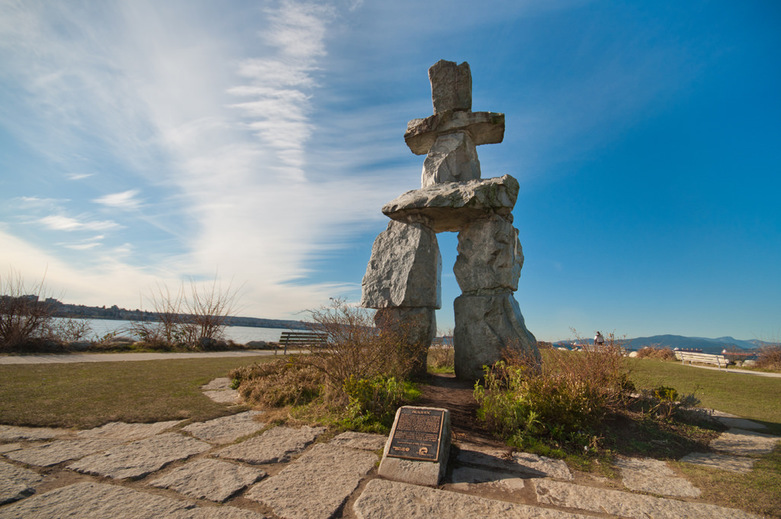 Inukshuk at English Bay West End
Inukshuk at English Bay West End
This haven on the edge of downtown has been a treasured neighbourhood in Vancouver since the 19th century, and it continues to impress both tourists and locals with its vibrant charm. And with a history that goes back over a century, the West End is one of the city's first neighbourhoods.
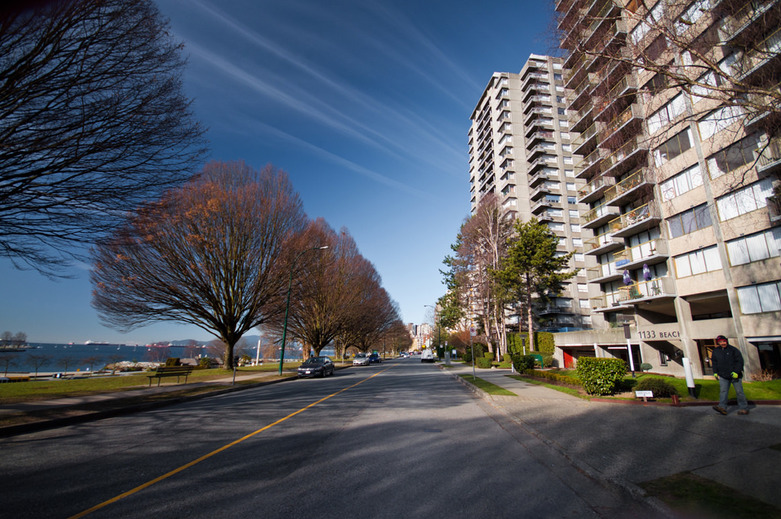 Second Beach West End
Second Beach West End
In his book The History of Metropolitan Vancouver, well-known folk historian and radio personality Chuck Davis describes the beginnings of what would become Vancouver's famous West End. In 1862, three enterprising men acquired 550 acres of land near what is now Burrard Street with the hopes of becoming brick-makers. The enterprise would never take off due to poor soil quality, and it earned them the probably unappreciated nickname "the three green horns." While they may have missed the mark in terms of masonry, the three associates had in fact stumbled into prime real estate. As the City of Vancouver grew to become the hub of urban life, the dream of a huge public park came to fruition with the creation of Stanley Park in 1888. The would-be brick-makers found themselves holding property wedged between the downtown core of an emerging metropolis and one of the world's largest urban parks. Not surprisingly, it was around this time that houses started going up in the West End.
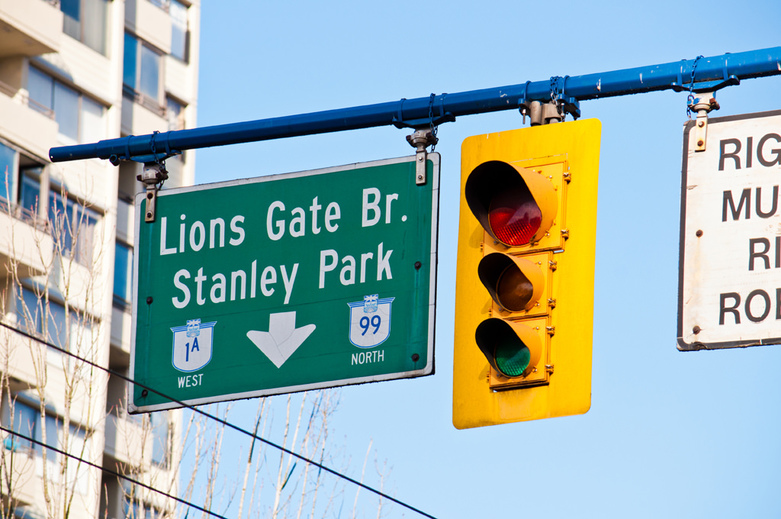 Denman street West End
Denman street West End
In the early 20th century, the West End, with its beachfront property and access to amenities, became a favourite spot for the wealthy. Huge mansions were constructed and gardeners were employed to maintain verdant greenery suitable for the new lumber barons and railway families. Micheal Kluckner documents in Vancouver Remembered how, eventually, the rich would pick up and move to Shaughnessy, leaving behind their opulent estates. Many of these wound up being converted into apartments, with single houses being split sometimes into over 20 suites. After the Second World War, many of the houses in the West End were torn down to make way for high-rise apartments, forever changing the face of Vancouver's shoreline. The area would become, in Kluckner's words,
a milieu for the culturally diverse, cosmopolitan residents of the city,
with an assortment of German and French restaurants and grocers in the area that would become the Robson shopping district.
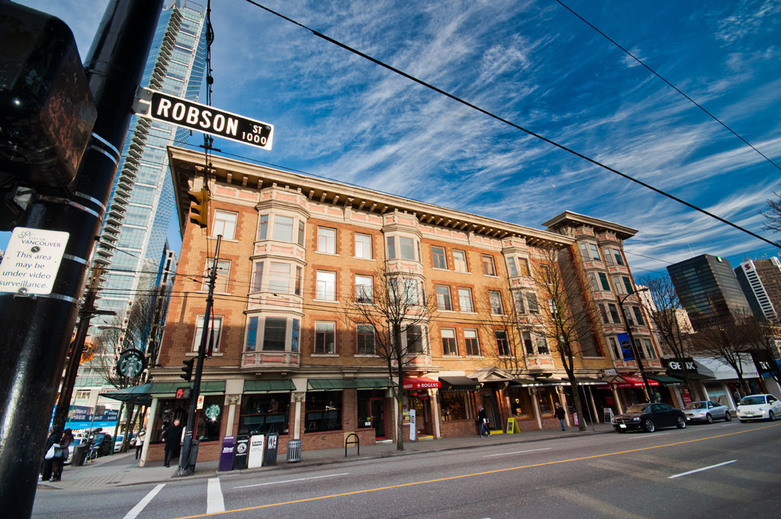 Robson Street West End
Robson Street West End
Today, the West End is still considered a very desirable neighbourhood. While it's mostly high-rises, you can still see the architecture of the older homes, giving the area its distinctive character. It's one of the city's best areas for meandering on summer afternoons, with beautiful streets, gardens, and homes so near the beach and downtown. While the West End might not look much like it did a hundred years ago, the people who live there love it for the same reason that Vancouver's wealthy flocked there in the past.
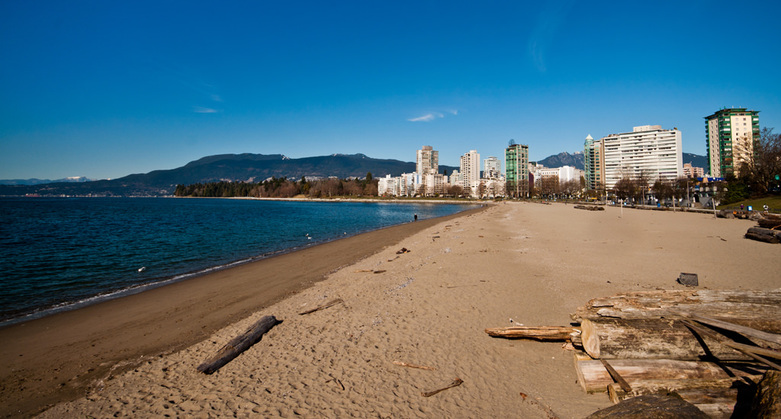 English Bay West End
English Bay West End
Reflecting on the neighbourhood today, current resident Brendan's concerns echo those of previous decades. Like in decades past, the main debate in the West End centres on the development of new high-rises. While it's almost impossible to imagine the Vancouver shoreline without its towers along the Seawall, some people worry about what increasing density will mean for the neighbourhood.
There's a lot of nice old buildings here. I don't know if I want to see them replaced by high-rises. It would really change things,
Brendan says. Only time will tell what the future holds for one of Vancouver's iconic neighbourhoods.
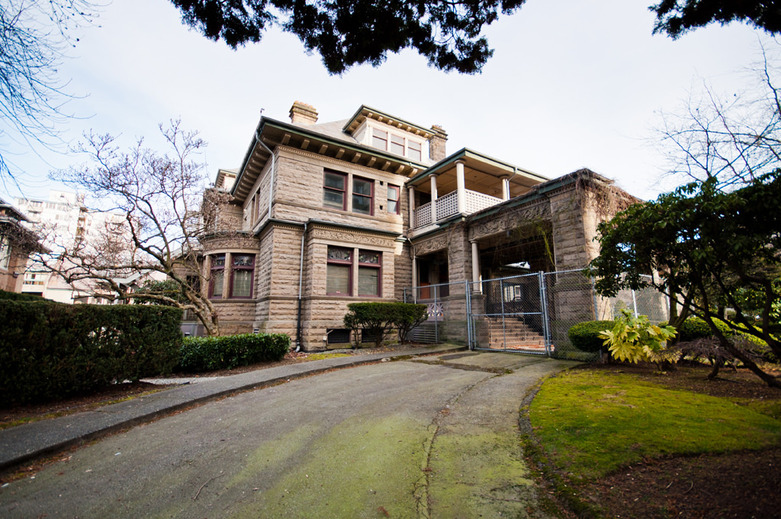 Davie Street Heritage house
Davie Street Heritage house
Since the 1970s, the West End has become the centre of Vancouver's LGBTQ community, with rainbow flags and crosswalks adorning Davie Street — where, every year, Vancouver hosts an enormous Pride Parade that attracts visitors from around the world. The West End remains a favourite not just for its residents, but for all Vancouverites.
Strathcona
Strathcona is officially Vancouver's oldest residential neighbourhood. Strathcona has always been a working-class area. It grew up around the old Hastings Mill, which was the first commercial enterprise the City of Vancouver would develop around. In the decades following the founding of the city, the population of Strathcona blossomed, largely as a result of the Canadian Pacific Railway's decision to use Vancouver as the terminus for the Trans-Canada line. Many of those who moved into Strathcona were immigrants, particularly of Chinese descent, which gave the region the nickname "China Valley." This remains true today, with over 40 per cent of residents speaking either Mandarin or Cantonese as a first language. The history of Strathcona is a reminder of the influence of Chinese culture on this city since the earliest days. To the west of this historic neighbourhood is Vancouver's Chinatown, the largest in all of Canada.
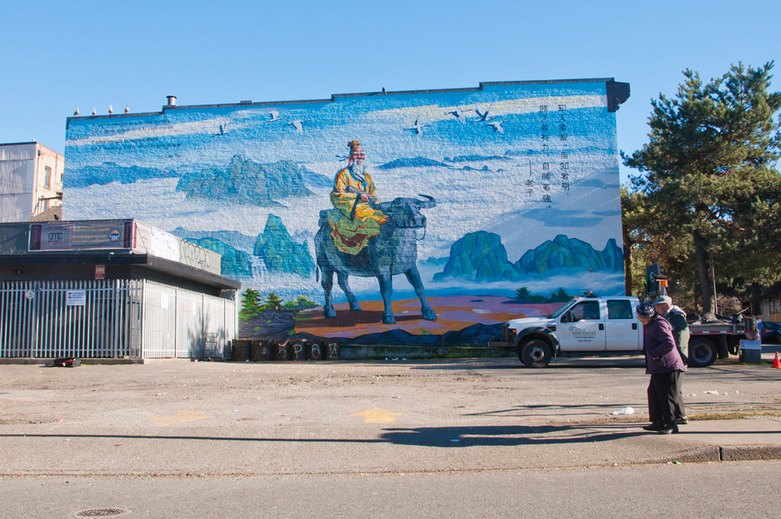 Strathcona
Strathcona
Many of the homes in Strathcona are considered heritage buildings, and over the past few decades, a number of homeowners have been restoring their properties to their original Victorian styles. Like in the West End, there's a particular focus on restoring homes to their original period colours. As a result, the neighbourhood is one of the most picturesque in the city, and also one of the most under-appreciated.
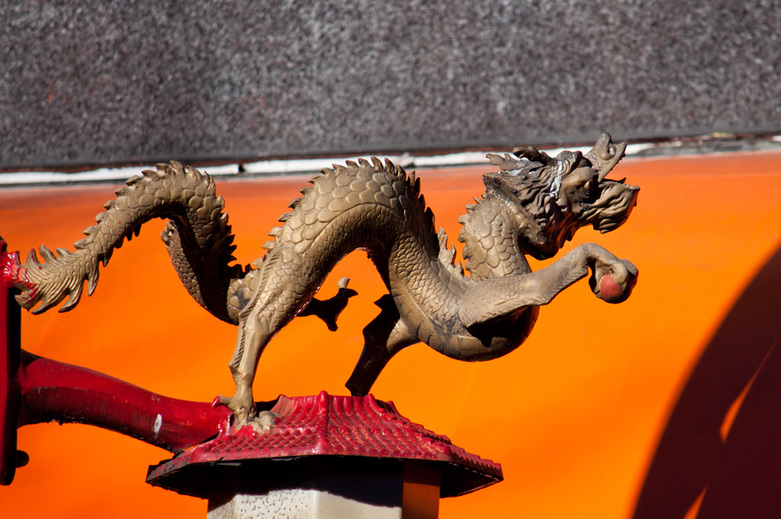 Strathcona Chinatown
Strathcona Chinatown
Derek, who grew up in Strathcona after immigrating there from China, appreciates how the neighbourhood has developed, particularly the greenery.
There's so much great landscaping now, so many nice trees and shrubs. I like when there's more than just pink and yellow flowers, so boring!
Of course, sometimes you can have the best of both worlds. Strathcona's Oppenheimer Park is one of the best places in Vancouver to see cherry trees in full spring blossom.
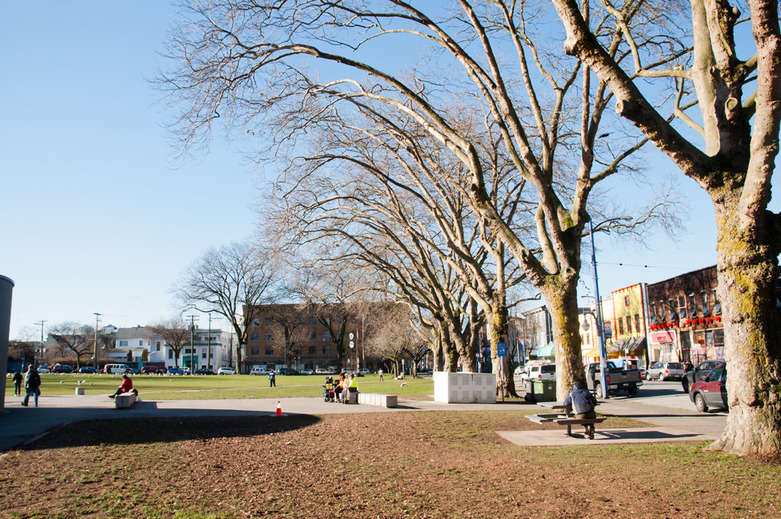 Oppenheimer Park Strathcona
Oppenheimer Park Strathcona
During the early decades of the 20th century, Strathcona was the target of "urban renewal" programs by the city, and the entire neighbourhood was slated for removal. Local citizens successfully fought against the city's attempt to remove them from their homes, and from this political movement was born Vancouver's COPE party. Most of the redevelopment was stopped, but the construction of the Georgia Viaduct meant the destruction of Hogan's Alley, the only historical neighbourhood in Vancouver to have a concentrated black population, businesses, and churches. It served as the hub of the African-Canadian community in Vancouver from the early 1900s until its destruction in 1970. Today, just by the viaduct on Main and Union, there is a memorial to famous guitar player Jimi Hendrix, who, as a child, used to visit Hogan's Alley to see his grandmother.
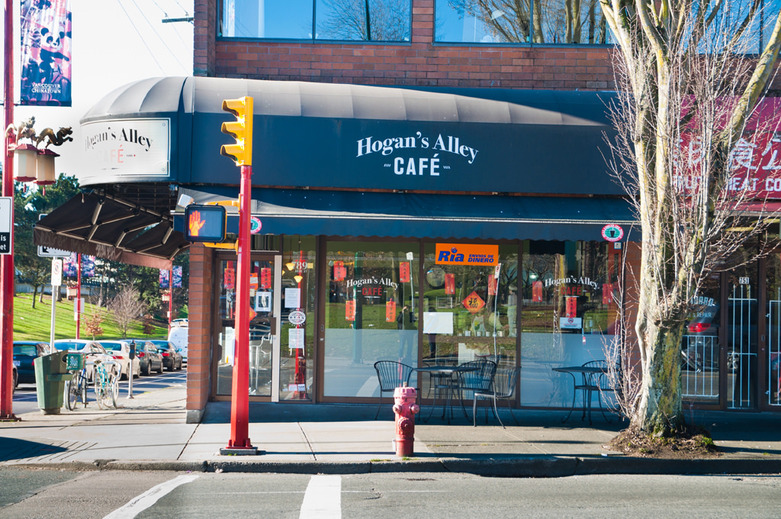 Hogans Alley Cafe Strathcona
Hogans Alley Cafe Strathcona
Strathcona has always been a diverse neighbourhood. This is just as true today as ever, and there is maybe no better demonstration of this than Hogan's Alley Café. Its name serving as a reminder for the black community that once was, this café on the western edge of Strathcona is operated by a Mexican family whose goal it is
to show the world the richest of Mexico beside the food and to promote a healthy life.
The café serves typical Vancouver café fare alongside authentic Mexican meals. Like Strathcona itself, this café is a living example of the richness and diversity of life in Vancouver.
Point Grey
Point Grey is one of Vancouver's oldest neighbourhoods and is now recognized as being among the most exclusive in all of Canada. Bordered by the University of British Columbia Endowment Lands to the west and the beaches of the Spanish Banks the to north, not far from downtown, it's not much of a surprise that houses in Point Grey are among the most expensive in the country.
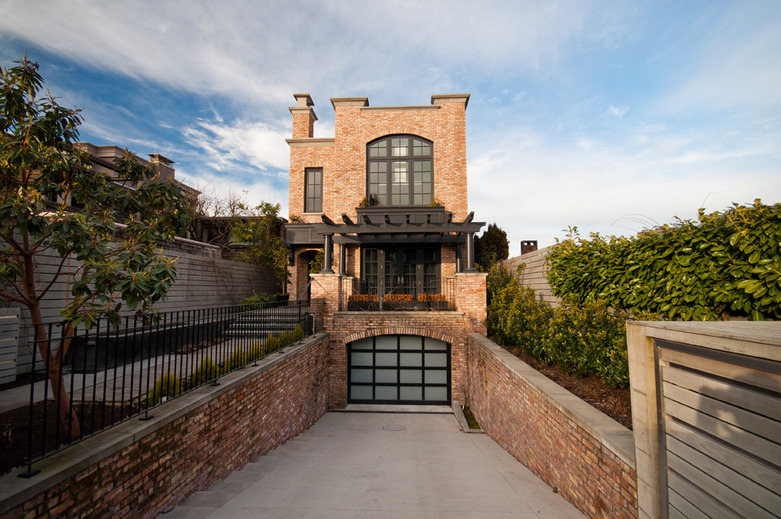 Point Grey Rd Luxury Homes
Point Grey Rd Luxury Homes
People had already been living in the area for years by the time they decided to amalgamate with the booming City of Vancouver in 1928. In 1922, the University of British Columbia moved out to a new campus near Point Grey after the now famous "Great Trek" of students from downtown Vancouver demanding the construction of a university. Today, many of UBC's faculty live in Point Grey, and the buses are forever full of students commuting to and from campus.
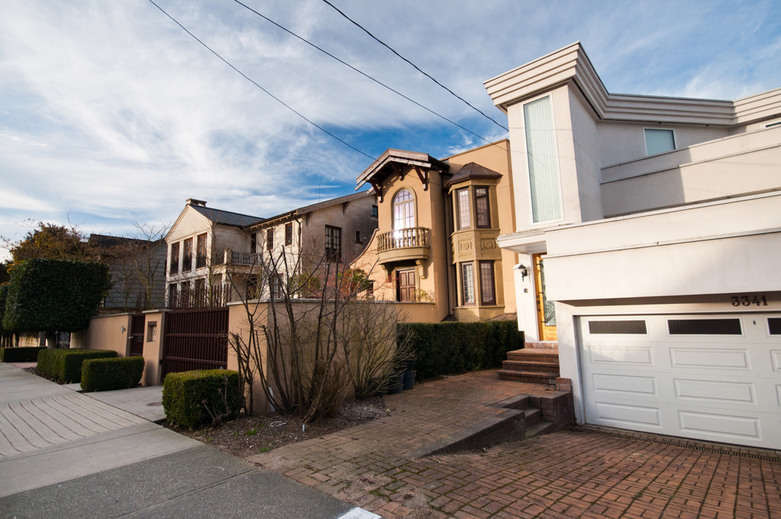 Point Grey Luxury Homes
Point Grey Luxury Homes
The business center of the neighbourhood spreads across 10th Avenue from Alma to Blanca. Called "Point Grey Village," this stretch includes independent businesses providing everything from fine dining to toy stores, as well as several grocers and shops. Every June, the street shuts down for the Fiesta Days carnival, one of the city's many summer block parties. While not drawing the same crowds as Commercial Drive's Italian Day or Kitslano's Khatsalano Day, Point Grey's street party is full of fun activities for families, including vintage cars and live music. Perhaps most exciting of all are the carnival rides and games set up in Trimble Park. With a view of the sunset over English Bay, it's hard to imagine a better place to enjoy some cotton candy with loved ones.
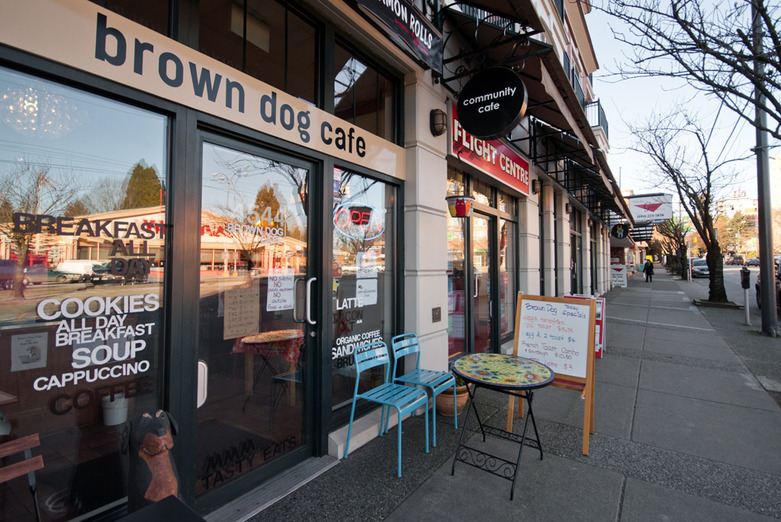 Point Grey Dog Brown Cafe
Point Grey Dog Brown Cafe
One of the longest-running businesses in the Point Grey Village is van Yperen Jewelers. Started in 1967 by Wily van Yperen, the store is now run by his son, Rob, who has watched the neighbourhood develop for 50 years. The van Yperens were brought to Point Grey more or less by chance, having come across an opportunity to buy an existing jewellery store. Since then, they've seen 14 jewellers come and go, but the neighbourhood, like the van Yperen approach to business, has remained largely the same. Rob speaks of the Point Grey Village much like he does his shop: he doesn't want either to be any bigger.
It's changed but stayed the same. It's like a little town, still the same three blocks,
he says.
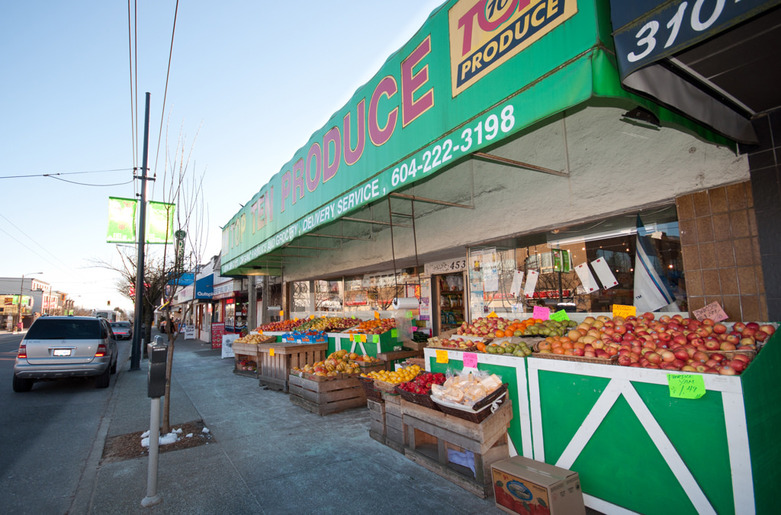 Point Grey W 10th Ave Grocer
Point Grey W 10th Ave Grocer
Though, that's not to say there hasn't been development. Rob attributes much of the neighbourhood's progress to the efforts of Eric Layland, who headed the Point Grey Business Improvement Association in the mid '80s, gaining the respect and admiration of the van Yperens, even though they happened to be rival jewellers. And while other jewellers have come and gone, Rob takes pride in his artwork, boasting that "something I make will last 1,000 years." It's harder to predict the future of Point Grey, but if Rob van Yperen has his way, it would
stay the humble little street that it is.
Beyond the Village, one of the best and least-talked-about advantages of Point Grey is its nearness to Pacific Spirit Regional Park. While perhaps not as well-known as Stanley Park, Pacific Spirit is undoubtedly one of the most beautiful urban parks in the country. Wedged between Point Grey and UBC, and with over 70 kilometres of forested trails and about 7 kilometres of beach front, it's easy to forget you're in one of Canada's largest cities. Some of the last remaining old-growth trees in the region are in this park, and it's amazing to think that not long ago, the entire area was full of these magnificent trees.
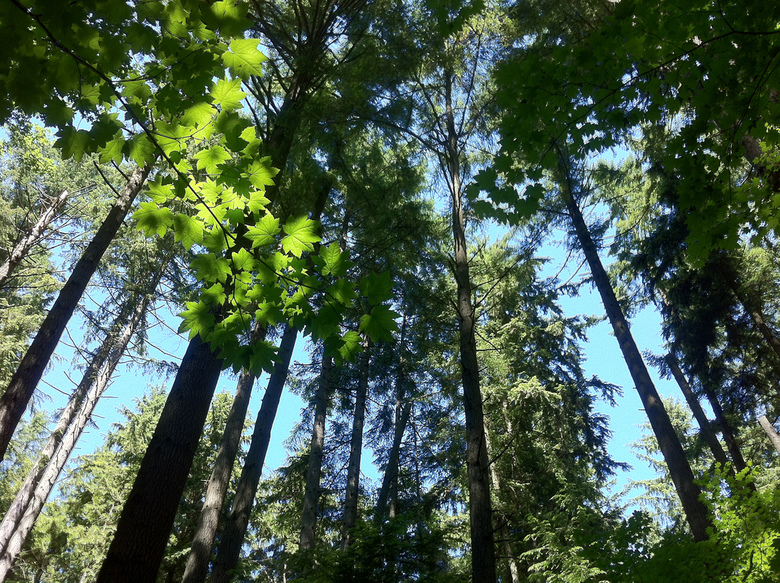 Trees In Pacific Spirit Regional Park By Irenelee
Trees In Pacific Spirit Regional Park By Irenelee
While the trees may be gone, Point Grey remains a beautiful place. With some of the most picturesque homes in the city, long streets sloping down towards the beach, and many school and parks, Point Grey is an ideal neighbourhood to raise a family in.
MEET THE PHOTOGRAPHER: KEVIN ENG
Kevin's passion for photography has encouraged others to see the splendor and beauty of nature right at their doorstep, as he captures the sights of the day, and colors and mystery of world while it sleeps. Many of the subjects of his work are based locally in his hometown in Vancouver, B.C., where he first discovered his fascination with night photography. Kevin is currently working as a music teacher, music director for his church, and landscape photographer.
KE00JA
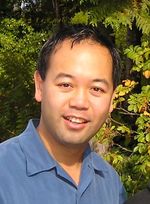
Vancouver is a beautiful city.
great set. Jay Banks thanks
beautiful!
Big fans of Inukshuk. Posed with a few and built a few in our day.
muy interesante=)
Pueblos que quisieron dejar su huella para los estudiosos de la historia.
Great share and I love the photos by Kevin Eng… Love Vancouver! Great Essay… We share a lot of cross over history here on the West Coast… from Seattle.
Thanks for visiting this site everyone! I’m happy to be living in the beautiful city of Vancouver!
Enjoyed the history and recollections of the Greater Vancouver area: a great city to be part of!
Thanks for all of this Jay!
Thanks for taking the time to do this Jay – it was fabulous and the photos by Kevin were incredible. A great job so thank you very much. http://www.barbarabellolsen.com